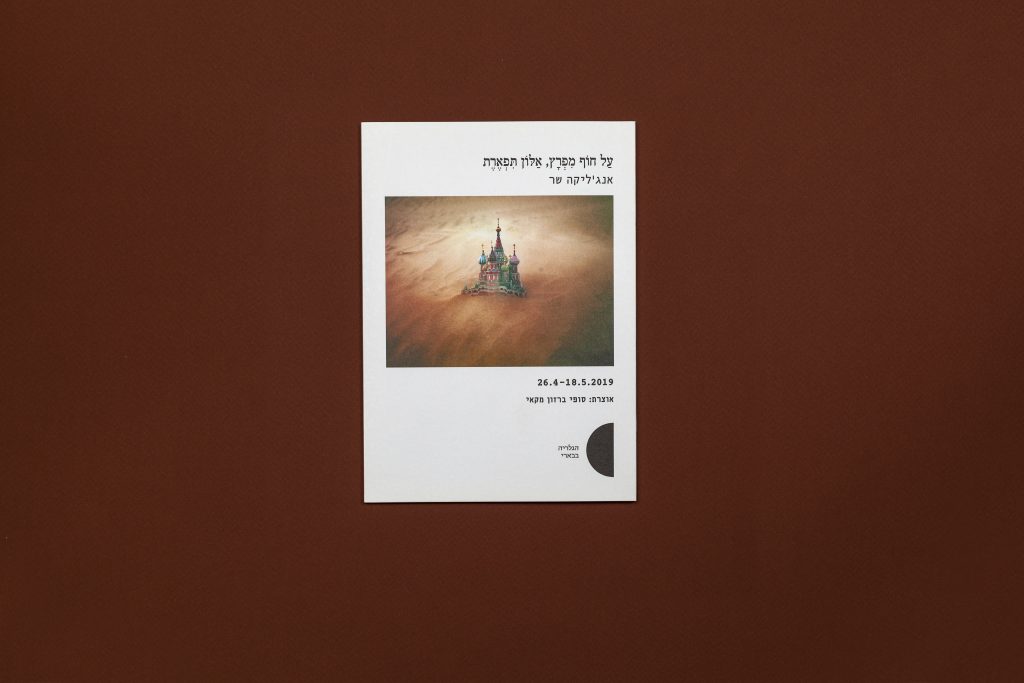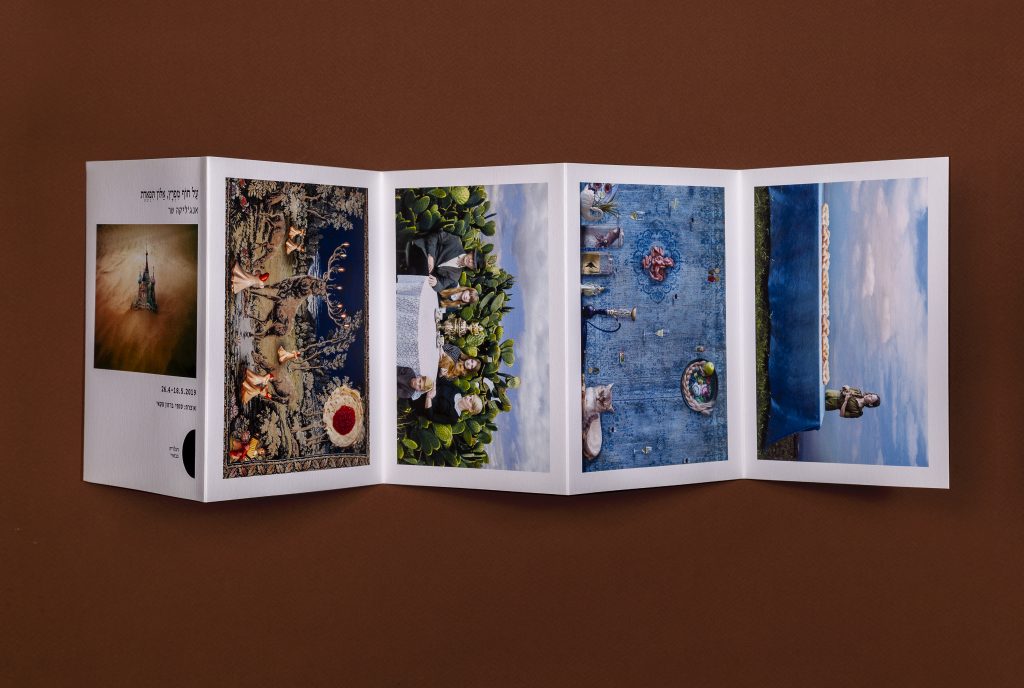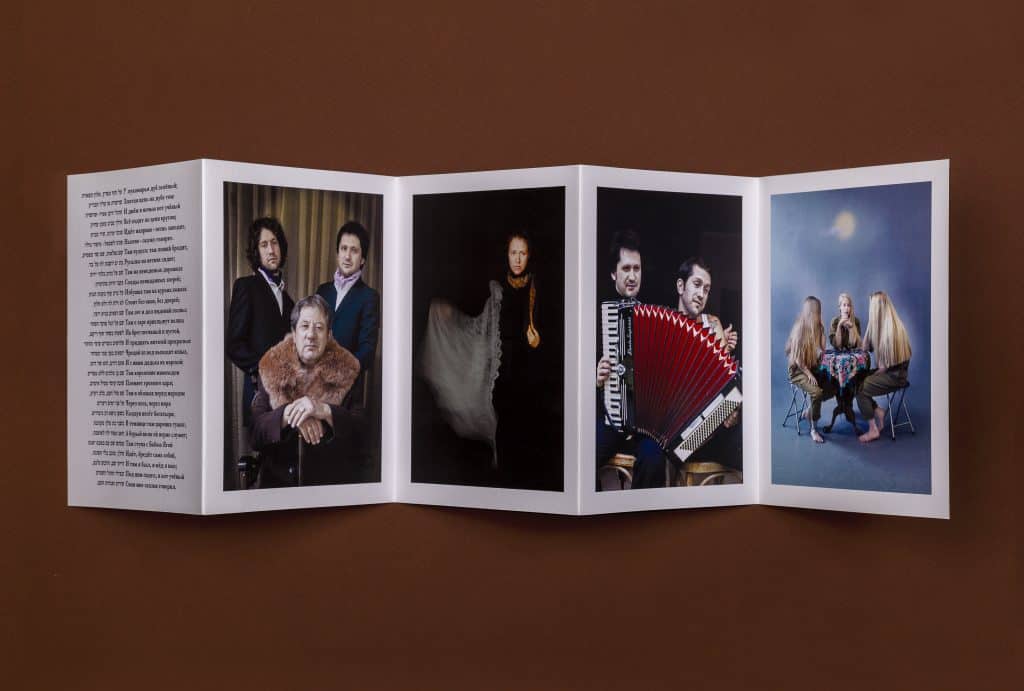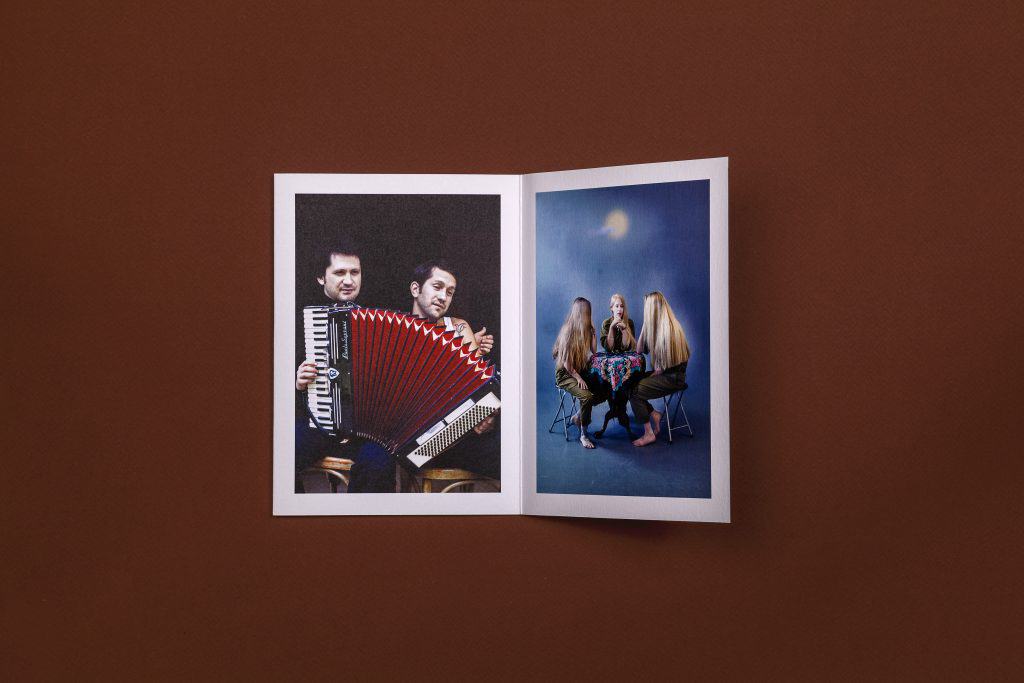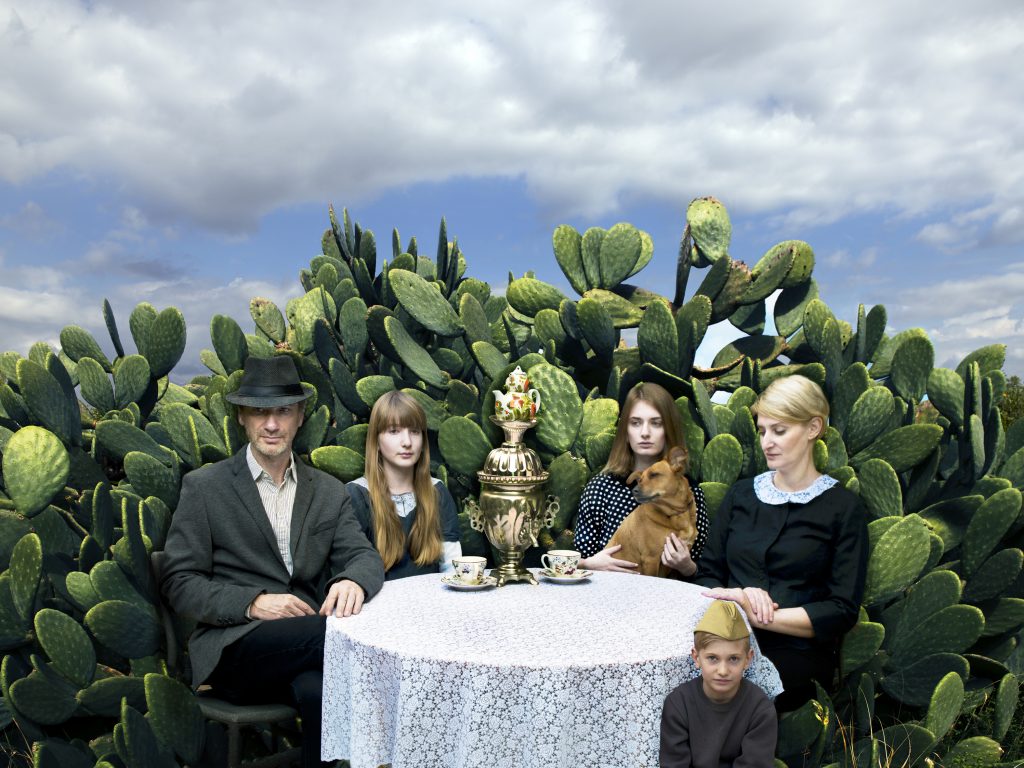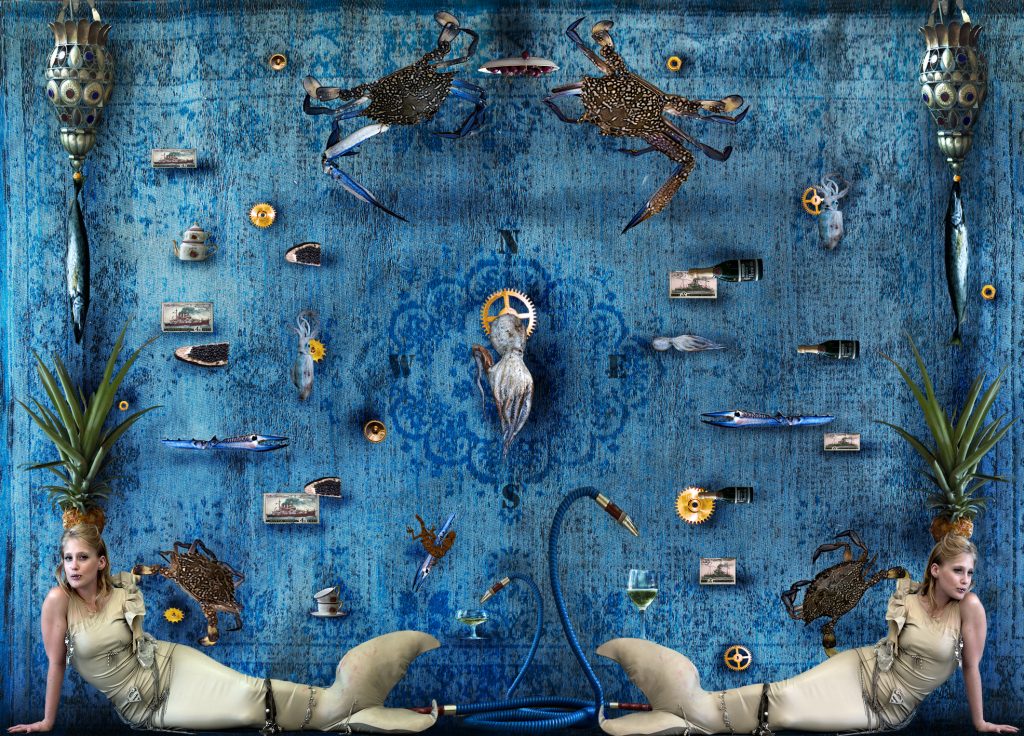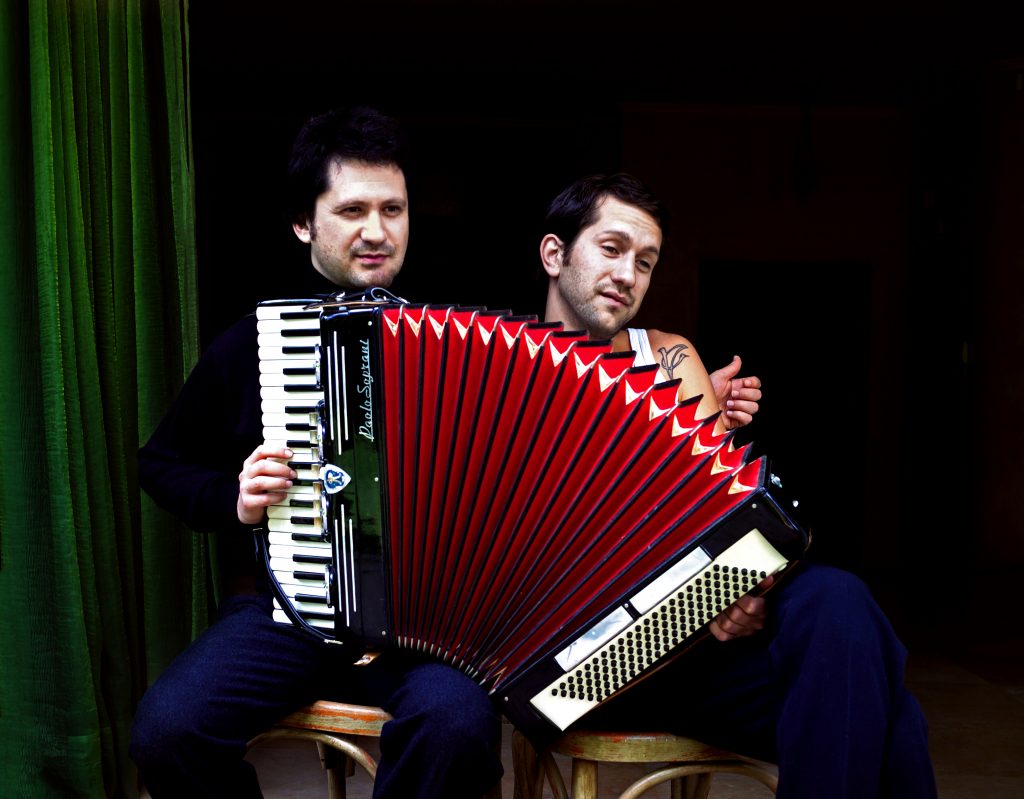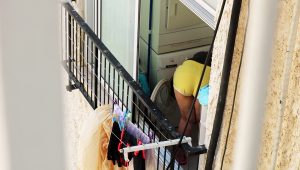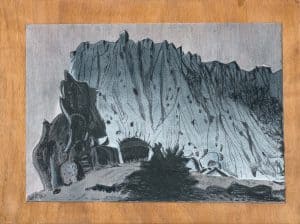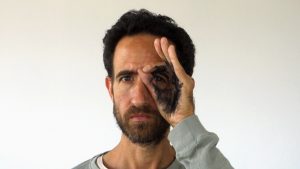Once in a land far-away (between Israel and Lithuania).
Angelika Sher’s exhibition opens with a quote from “Ruslan and Ludmila” – the famous poem by the greatest Russian poet- Alexander Pushkin. Written between 1817-1820, it is one of the most important works written in Russian, and it serves as the symbolic axis around which the exhibition is woven. The exhibition unfolds a story of a journey, a quest, in a remote, dramatic and beautiful setting. The point of view is phantasmatic but rooted in a world existing between Israel and Lithuania, in a magic space of immigration. This space in which she places us in colorful harmony is the archetypal paradise from which all human beings were exiled to a foreign and unknown land. The narrative of the exhibition based on folk legends and folklore, develops into expressions of multiculturalism and an examination of the integration processes of immigrants in their new culture. Like many human psyche processes, they are cross-cultural transversal and very personal and intimate. Sher expresses her multicultural partnership, circles of identities, and her movement between them. Her visual language is rich, full of details, shapes and symbols, metaphors, and motifs drawn from the bottom of the collective human subconscious. It has spiritual and material characteristics of the culture from which she immigrated to Israel as an adult in the 90s. References and symbols of Israeliness are also woven into this twisted system of roots.
Sher photographs in Israel, but her artistic language stems deeply from the history and heritage of European art and culture. The light, compositions and rhetorical use of symbols and icons. This first layer is the contact point between two cultural groups and a representation of the symbiosis between her culture of origin and the integrating culture in Israel. Immigrant’s integration processes range from assimilation at one pole, to preserving the culture of their homeland at the other. The integrating culture is located somewhere between multiculturalism and a melting pot, represented in the works as Israeli Defence Force uniforms. Sher’s integration processes are also expressed internalized within the artistic discourse. She talks about an emotional maturity to examine her place concerning the Israeli history of art, by photographing a homage to painter Yosl Bergner’s work – an immigrant family against the background of the Sabra.
The exhibition has an autobiographical side to it, more or less, although, it metamorphosed to a phantasmatic appearance. The objects are from Sher’s home, and the people are from her life. The collages are comprised of objects and items scattered in her own home or her that of her family. These are nostalgic and personal items, on the one hand, and on the other hand, cultural symbols: a figurine of Cheburashka together with Gena the Crocodile, the white swan, the learned cat, a childhood clock shaped like Soviet monuments, grandma’s floral tray for birthday cakes. Blinis with red Caviar portray a full moon, a magic carpet woven like a summer night dream landscape, the supernatural world of forest creatures. The humorous, full moon is a symbol that transcends cultures and peoples. Part of myths that persist throughout human history it is embedded in popular culture – chaos provoking full moon; full moon and madness. Inside this thick human cauldron, the deer’s horns also burn like the seven-branched Menorah candelabrum. Saint Basil’s Cathedral, which dominates Moscow’s Red Square, one of the most famous buildings in the world, considered as the center of all of Russia, grows like a mirage in the sands of Rishon LeTsiyon, forming an image taken from the One Thousand and One Stories of Middle Eastern Nights. A young woman wearing IDF uniform braids a Challah on the Last Supper’s table. The photographed characters are her nuclear and distant family, friends (and their cat). And despite their humanity, they are typological; they are not historical figures or even flesh-and-blood figures. They are representations of sub-hybrid identities, which merge into a hybrid creature of a third kind.


